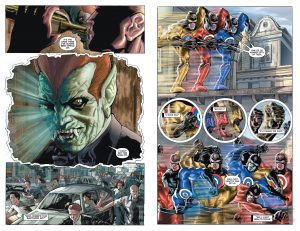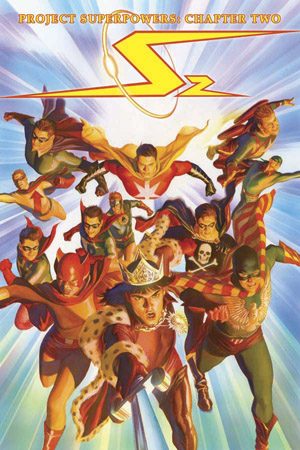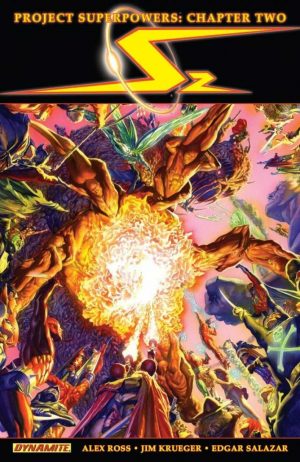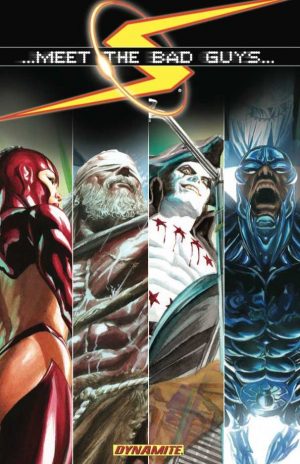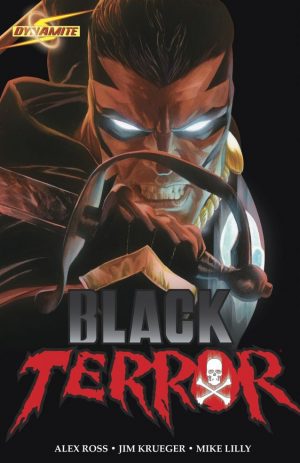Review by Frank Plowright
Project Superpowers unites a group of out of copyright 1940s superheroes in the present day. Their decades long absence is explained by one of their number, Fighting Yank, being tricked into trapping them on the basis that doing so would also keep evil from the world. Now in old age he’s been convinced he acted in error, and must rectify this with the help of heroes he didn’t capture back in the day. It’s a straightforward idea with plenty of attached permutations. How will the freed heroes regard the Fighting Yank? Where have they actually been and what do they remember? What will it be like for them awakening in the 21st century as crimefighters still in their prime?
Alex Ross could be likened to a film director in the way he controls Project Superpowers after redesigning the characters. He co-plots with scripter Jim Krueger, provides layouts for artist Carlos Paul, and supplies plenty of pin-ups as characters are reintroduced chapter by chapter. Ross and Krueger are definitely playing a long game, although exactly how long probably wasn’t anticipated when they began in 2008. A decade on two sequels have seen publication along with several graphic novels featuring individual characters. Somewhere along the way, the focus was lost.
Because there can be barely anyone alive who cares about the 1940s obscurities, Ross and Krueger have free reign and they take an astonishingly decompressed approach. Beyond the basis of the plot being explained in the opening chapter, there’s very little progress over the next three, and Krueger has an incredibly verbose writing style. Assorted heroes pop up in pairs in various places around the world, immediately drawn to something evil in their vicinity, while Fighting Yank, Black Terror and Green Lama have an early encounter with what appears to be the evil in the present day. Dynamic Man is another World War II era hero, but one who survived and flourished, and who’s had plenty of experience with deceit and manipulation.
Ross always has a fine sense of dynamism, and working from his layouts that transmits through Carlos Paul, as can be seen on the sample pages. They also feature a couple of Ross’ effective character redesigns, albeit of people with only cameo roles in this opening section. Paul’s not as effective when it comes to the depiction of people, and there’s little emotion generated from his characters, and they’re sometimes twisted into forced poses.
By halfway it seems Ross and Krueger are just rambling, but the leisurely roll out does let us become attuned to some of a large cast and how they’ve changed, and around chapter five, everything begins to slot into place. However, that’s when we’re introduced to more villains, a council of evil seated high around a table looking down at others. It’s almost laughable. Very Austin Powers. We’re also missing a sense of the wider world. Green Lama and friends have little problem occupying Manhattan. Where are the people? What is the response of the authorities? Beyond that Krueger fails to give anyone an individual voice. However, this is just the starting point of what’s intended as something epic, and it has that potential, but considerable improvement is needed for volume two. Both are combined as the first Project Superpowers Omnibus.

